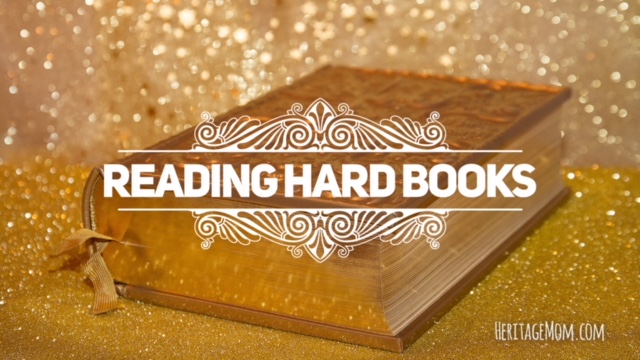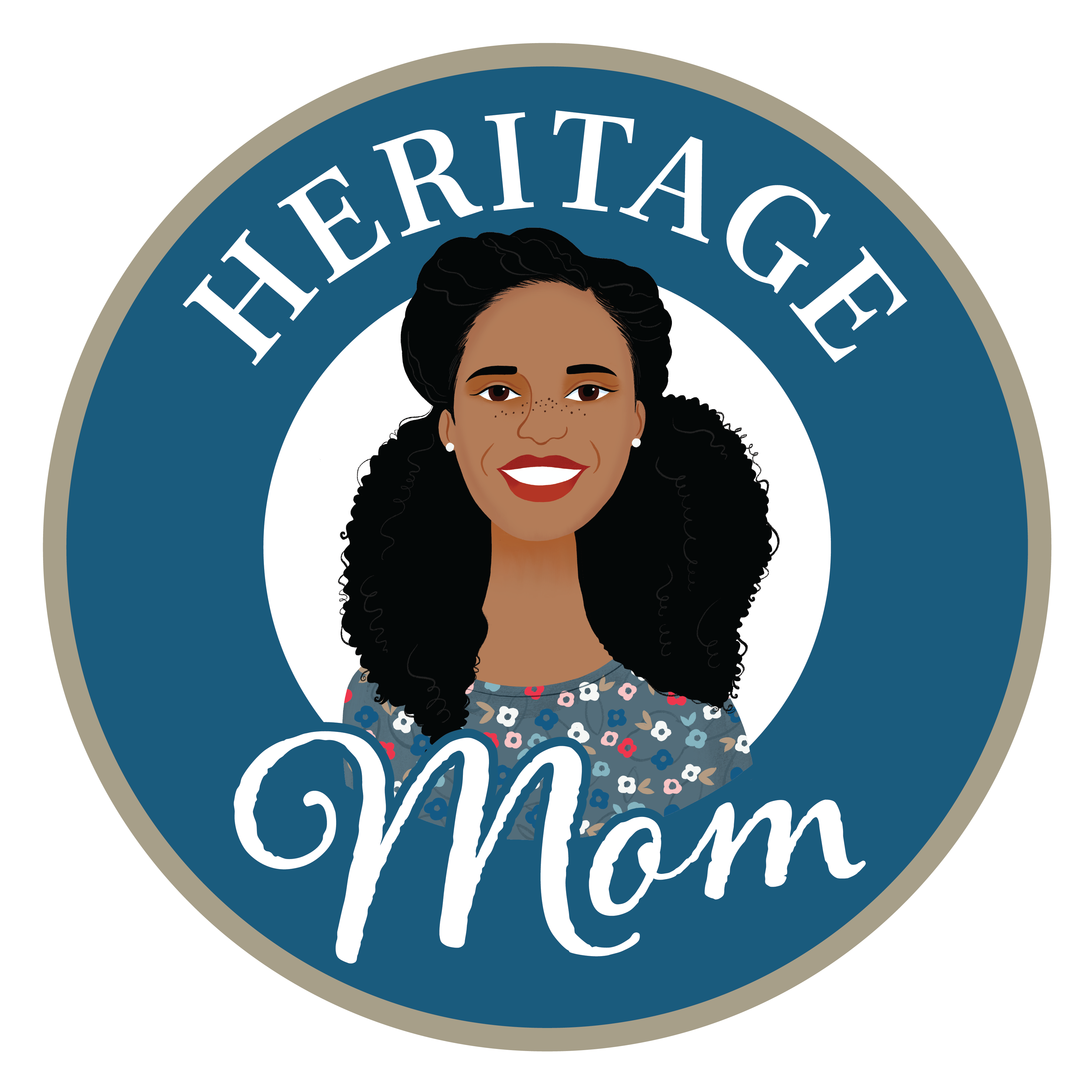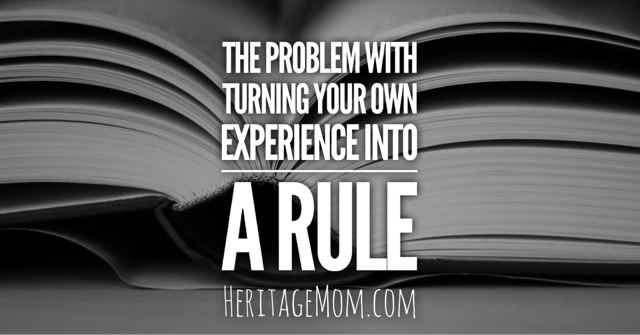Books can be hard for a variety of reasons. There are those that Sarah MacKenzie at Read-Aloud Revival calls “messy” books with hard topics. And those that are inherently difficult to read because they’re poorly written or just plain boring. But there are also those titles that are hard because they are just hard.

I intentionally include challenging books in our homeschool curriculum – not solely because they’re hard, but because they’re good. My children and I have different definitions of what makes a book hard, but ironically, we often arrive at the same conclusion. I consider books with new, rich, and varied vocabulary hard. Those with complex character development and plots that require your full attention. Books with more narrative vs. dialogue or unfamiliar language and dialect.
My kids, on the other hand, have a no-fail 2-point test for hard books:
- The font is small.
- There are no pictures.
When I place a picture-free book with tiny words before them, they physically shudder and the whining commences. I can’t make a picture appear where one is not, but I’m often able to skirt the second issue by changing the font size on their Kindles. Poof! Problem solved. {Shhh…don’t tell them my secret.}
Whether defined by my criteria or their simple rules of thumb, we typically agree when a book is hard. But simply knowing is not enough. At some point, the book must be tackled. The only way to learn to read hard books is to read hard books. The more practice the kids get with successfully making their way through more demanding books, the more confident they become. My girls know that they can, in fact, read tough literature. They continue to whine at first (more out of habit than concern, I think), but I encourage them and their abilities while reminding them that “You’ve done this before.”
When my book choices (for them) are met with bewilderment or even tears, I’ve found that one of these approaches always helps get us over the hump and back to smiles:
- Jumpstart reading. Sometimes reading the first 1-3 chapters of a hard book aloud is all it takes to help my kids get into the story and become familiar with the author’s writing style. During this time, I can gauge their level of comprehension and engagement from their narrations. Once I kick things off, they’re usually more than happy to pick it up and read on.
- Tag-team reading. Processing hard books requires active reading. Mindlessly moving from word to word won’t work for these books because every sentence is purposeful, and missed imagery can prevent the kids from making important connections later in the book. But active reading can be exhausting, even for me, and the habit of attention can only take us so far. Taking turns reading through a hard book gives my kids a mental break and allows us to progress through a book that may otherwise take forever. I’m in full support of slow reading, but I’m not in favor of taking so long on a single book that it loses its luster.
- Portfolio reading. Often, the only thing I need to do to help the kids with hard books is to include other, easier-to-read, books in their reading portfolio. For now, I pick all of the books that the kids can read, but it’s up to them to choose which books they want to pursue within the given set. There are hundreds of books in our home to choose from, and they have monitored freedom to choose other books from the library. As I present the next book they’ll read for school or when they choose their next “free read,” I try to steer them towards books that will complement the other things they’ll be reading. My oldest typically has 3-4 books going at a time (historical fiction, classic novel, biography, and a life-giving book), and I don’t want more than 1 or 2 of those to be hard.
- Audio-book reading breaks. I don’t use this one as often as the others, but I do rely on audio books when it’s convenient. For some reason, my oldest really struggles with understanding accents and many of the classic recordings we have utilize narrators with accents. I also find that the kids aren’t always as attentive to audio books. I take responsibility for some of that because I’m not as attentive to them either. Monkey see, monkey do.
It’s important to point out that all of these strategies assume that the book in question is actually a good book. If it’s something that I’ve assigned for school, it’s definitely a great living or life-giving book that will capture their attention and hopefully move them in some way.
Our most recent hard book was Amos Fortune, Free Man by Elizabeth Yates, and as always, it was worth every inch of effort. The first day that I presented it to my oldest daughter, she quickly flipped through the pages and immediately started crying.
With real tears. Complete with snot.
I was suprised by her stronger-than-usual response, but I didn’t get frazzled. I calmly explained that it was an amazing book that I’d like her to try. I offered to read the first chapter aloud, and she accepted. I expected her to ask me to continue reading, but she actually asked to read the next chapter herself. And I never heard another peep from her about the book being too hard. That’s when you know you have a winner!






0 Comments